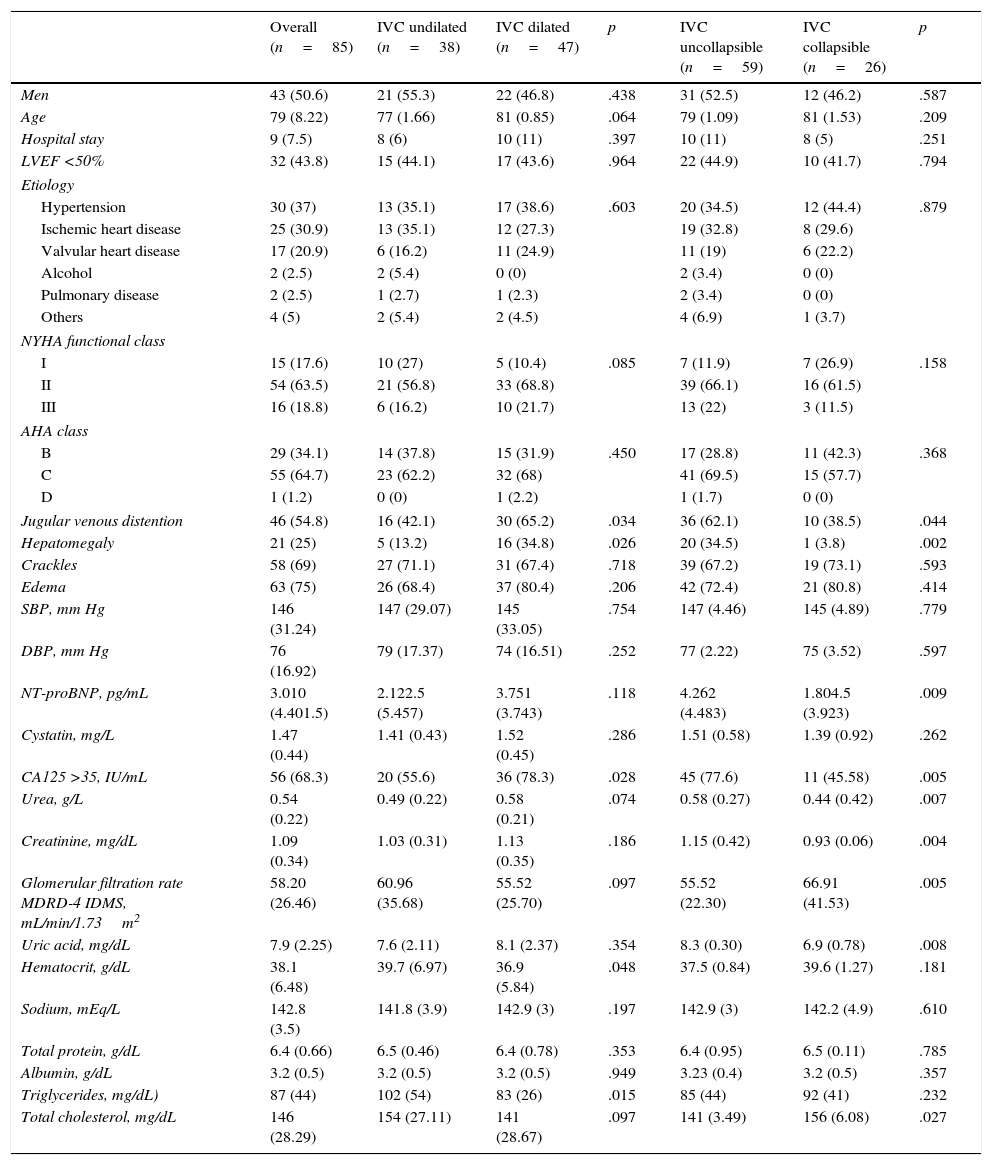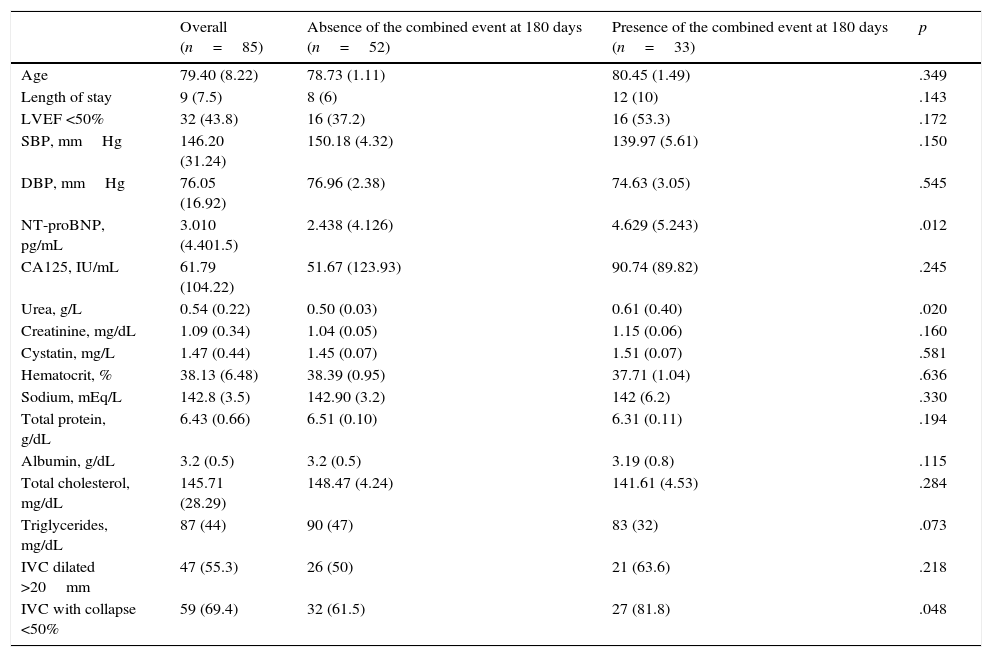To assess the utility of measuring the diameter and collapse of the inferior vena cava (IVC) in acute heart failure (AHF), its relationship with the prognosis and serum biomarkers of congestion.
Patients and methodsAn observational prospective study was conducted that included 85 patients with AHF, classifying them into 4 groups according to IVC diameter (≤ or >20mm) and inspiratory collapse (< or ≥50%) at admission. The endpoints were mortality due to HF and the combined event of mortality and readmission for HF at 180 days.
ResultsSome 24.7% of the patients had an undilated IVC and ≥50% collapse (group 1); 20% had an undilated IVC and <50% collapse (group 2), 5.9% had a dilated IVC and ≥50% collapse (group 3); and 49.4% had a dilated IVC and <50% collapse (group 4). The lack of inspiratory collapse but not IVC dilation was related to higher concentrations of urea (p=.007), creatinine (p=.004), uric acid (p=.008), NT-proBNP (p=.009) and CA125 (p=.005). Survival free of the combined event at 180 days was lower in those patients with no IVC collapse.
ConclusionsDilation and the absence of the inspiratory collapse of the IVC are common in the context of AHF. The lack of inspiratory collapse of the IVC during the decompensation phase identifies a subgroup of patients with poorer prognosis at 6 months.
Valorar la utilidad de la medición del diámetro y colapso de la vena cava inferior (VCI) en la insuficiencia cardiaca aguda (ICA), su relación con el pronóstico y con biomarcadores séricos de congestión.
Pacientes y métodosEstudio prospectivo observacional que incluyó 85 pacientes con ICA, clasificándolos en 4 grupos según el diámetro de la VCI (≤ o >20mm) y su colapso inspiratorio (< o ≥50%) al ingreso. Las variables de valoración fueron la mortalidad por IC y el evento combinado de mortalidad y reingreso por IC a los 180días.
ResultadosEl 24,7% de los pacientes presentó una VCI no dilatada y colapso ≥50% (grupo 1); el 20% VCI no dilatada y colapso <50% (grupo 2); el 5,9% VCI dilatada y colapso ≥50% (grupo 3); el 49,4% VCI dilatada y colapso <50% (grupo 4). La ausencia de colapso inspiratorio, pero no la dilatación de la VCI, se relacionó con concentraciones más elevadas de urea (p=0,007), creatinina (p=0,004), ácido úrico (p=0,008), NT-proBNP (p=0,009) y CA125 (p=0,005). La supervivencia libre de evento combinado a los 180días fue inferior en aquellos pacientes sin colapso de la VCI.
ConclusionesLa dilatación y la ausencia de colapso inspiratorio de la VCI es frecuente en el contexto de la ICA. La ausencia de colapso inspiratorio de la VCI durante la fase de descompensación identifica un subgrupo de pacientes con peor pronóstico a los 6 meses.
Article
Diríjase desde aquí a la web de la >>>FESEMI<<< e inicie sesión mediante el formulario que se encuentra en la barra superior, pulsando sobre el candado.

Una vez autentificado, en la misma web de FESEMI, en el menú superior, elija la opción deseada.

>>>FESEMI<<<










